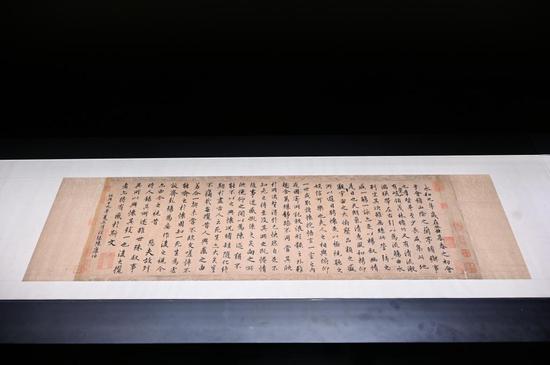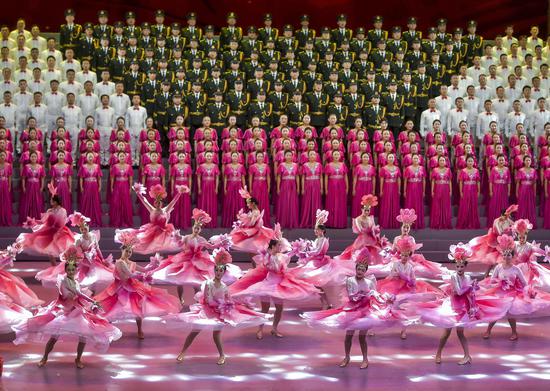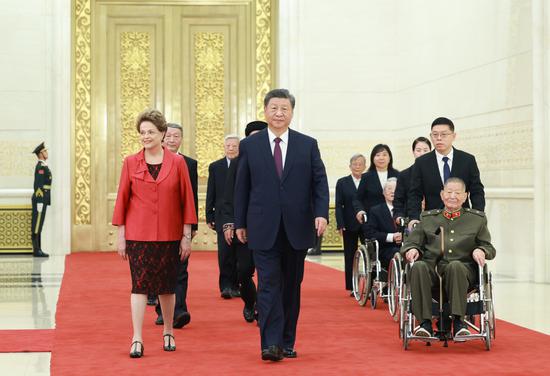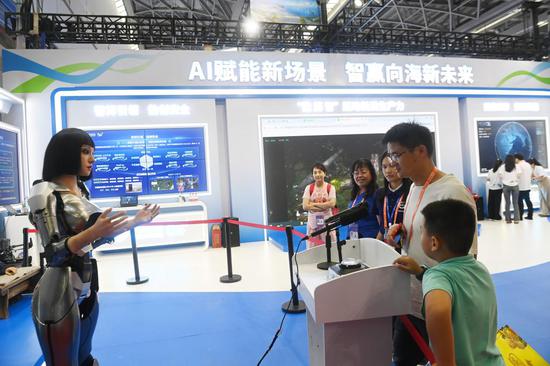China's first capital market-targeted monetary tool officially launched on Thursday. Together with the recently introduced economic stimulus policies and more of the kind in the pipeline, such moves will help to further improve market liquidity while boosting investors' confidence, which is conducive to the market stabilization in the long run, said experts.
Their comments were made on Thursday, when the 500-billion-yuan ($71 billion) Securities, Funds and Insurance companies Swap Facility (SFISF) was officially launched by the People's Bank of China, the country's central bank.
The SFISF will allow qualified securities brokerages, fund companies and insurers to use their assets including bonds, stock exchange traded funds and holdings in the constituents of the benchmark CSI 300 Index as collateral in exchange for highly liquid assets such as treasury bonds and central bank bills, the PBOC said in a statement.
Application for the swap program started on Thursday, and while the initial phase of the program is set at 500 billion yuan, it can be further expanded depending on the situation, according to the statement.
PBOC's governor Pan Gongsheng announced the plan to launch the swap program in late September, adding that the move would "significantly enhance firms' ability to access funds to buy stocks".
Zhu Hualei, senior investment consultant of Jufeng Investment Information, explained that the SFISF will help to usher in more capital inflow into the A-share market and avoid drastic market fluctuations, including panic selling.
This swap program will also revitalize the existing assets held by securities, fund and insurance companies, providing more liquidity to these financial service providers. This is of great importance to further consolidating A-share investors' confidence and stabilizing market performance, he said.
The benchmark Shanghai Composite Index gained 1.32 percent to close at 3301.93 points on Thursday, while the Shenzhen Component Index slid 0.82 percent.
Trading remained active, with the combined trading value at the Shanghai and Shenzhen exchanges exceeding 2.1 trillion yuan. A large number of State-backed enterprises trading at the technology-focused ChiNext in Shenzhen, including China Railway Prefabricated Construction and COFCO Technology &Industry, touched the daily price increase limit of 20 percent on Thursday.
Xu Zhong, deputy director of National Association of Financial Market Institutional Investors, stressed that the SFISF cannot be understood as the central bank entering the stock market as the monetary base is not increased and the central bank's balance sheet is not expanded while implementing the swap program.
The SFISF is similar to the Term Securities Lending Facility once introduced by the US Federal Reserve, the latter of which helped to improve liquidity by exchanging equities for treasury bonds, said Xu.
The Fed launched the TSLF in 2008, when the capital market was hit by the global financial crisis. The TSLF allowed primary dealers to borrow treasury bonds with higher liquidity by using the less liquid securities they held as collaterals.
The SFISF, the first phase 300-billion-yuan special reloan announced in late September to support public companies' buybacks and increased holdings, as well as the recently announced batch of incremental stimulus packages, have significantly boosted the market confidence in China, said Robin Xing, chief China economist at Morgan Stanley.
Describing the SFISF as "unprecedented", Xiong Yi, chief China economist at Deutsche Bank, said that the market appetite picked up immediately when the plan to launch the program was announced, proven by the rising benchmark indexes and surging trading value lately.
At a news conference scheduled for Saturday, Finance Minister Lan Fo'an is expected to introduce plans aimed at "intensifying counter-cyclical adjustment of fiscal policy to promote high-quality economic development".
Industry experts estimate that the scale of incremental fiscal policies to be released within the year may not be less than 2 trillion yuan. They may include raising the deficit ratio, issuing special treasury bonds and ultra-long-term special treasury bonds, and expanding special bonds' scope of use.

















































 京公网安备 11010202009201号
京公网安备 11010202009201号
